Capturing on Kodak 35mm film, DP Mikiya Takimoto created an engaging visual intimacy for Hirokazu Kore-eda’s acclaimed Netflix series 'Asura'
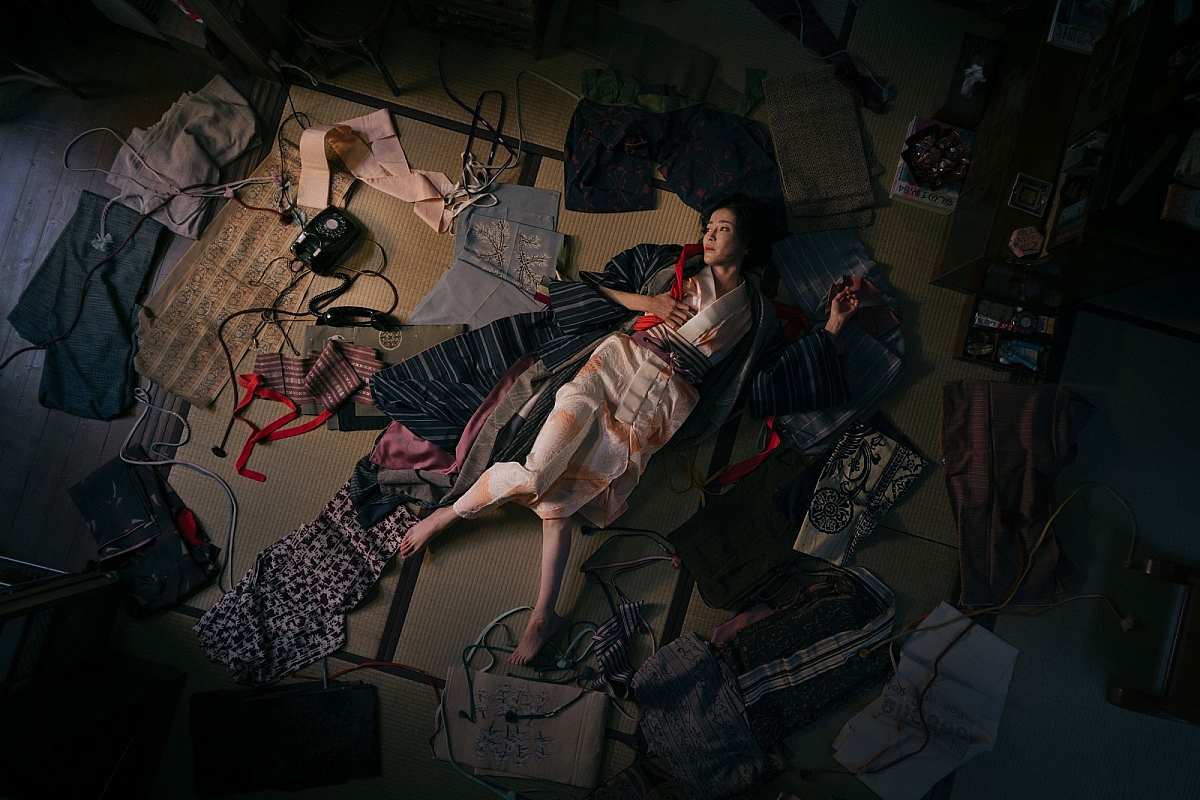
© Netflix, Inc. 2025. All Rights Reserved.
Critically-acclaimed as one of the best and most beautiful TV series' of 2025, director Hirokazu Kore-eda's Asura, streaming now on Netflix, is a delicately-balanced drama about family dynamics, focusing particularly on the plight of women in a male-dominated society.
Shot on KODAK 35mm film by DP Mikiya Takimoto, and presented as seven hour-long episodes, the story follows the relationships between four grown-up sisters – flower arrangement master Tsunako, housewife Makiko, librarian Takiko and waitress Sakiko Takezawa – after the sudden discovery of their ageing father’s long-time infidelity with a woman of much younger years than himself and his wife, their mother, Fuji. As the truth spills out, the sisters have different reactions to this revelation, each confronting their own personal issues, torments, secrets and suspicions.
Asura is an adaptation of Japanese screenwriter Kuniko Mukōda's novel of the same name, which aired as a two-part TV series on NHK in 1979 and was also made into the 2003 film, Like Asura, directed by Yoshimitsu Morita.
The new Netflix series has been lauded for its direction and lead performances, which shift by turns between shock and amusement, tragedy and comedy. It has also been praised for the engaging intimacy of Takimoto’s cinematography, incorporating a muted but warm color palette to evoke Japan in the late 1970s.
Filming on Asura took place over four and half months, between August and December 2023, on specially-constructed interior sets, some with moveable walls, within the sound stages at Toho Studios, Tokyo. Shooting also took place at physical exteriors and apartment locations around the city’s Kanagawa Prefecture and Ota Ward in Tokyo.
Mr Takimoto started-out as a photographer and now is a leading commercials cinematographer. Asura project represents the fourth longform collaboration with Kore-eda, following Like Father, Like Son (2013) and Our Little Sister (2015), both shot on Kodak 35mm film, plus The Third Murder (2017).
The producers took advantage of a special feature film production support package from Kodak Japan and post-facility Imagica Entertainment Media Services, offering a simple, clear and affordable solution for the budgeting of feature films, that includes color or B&W filmstock, processing (including special processess such as pull and push), 4K scanning and dailies.
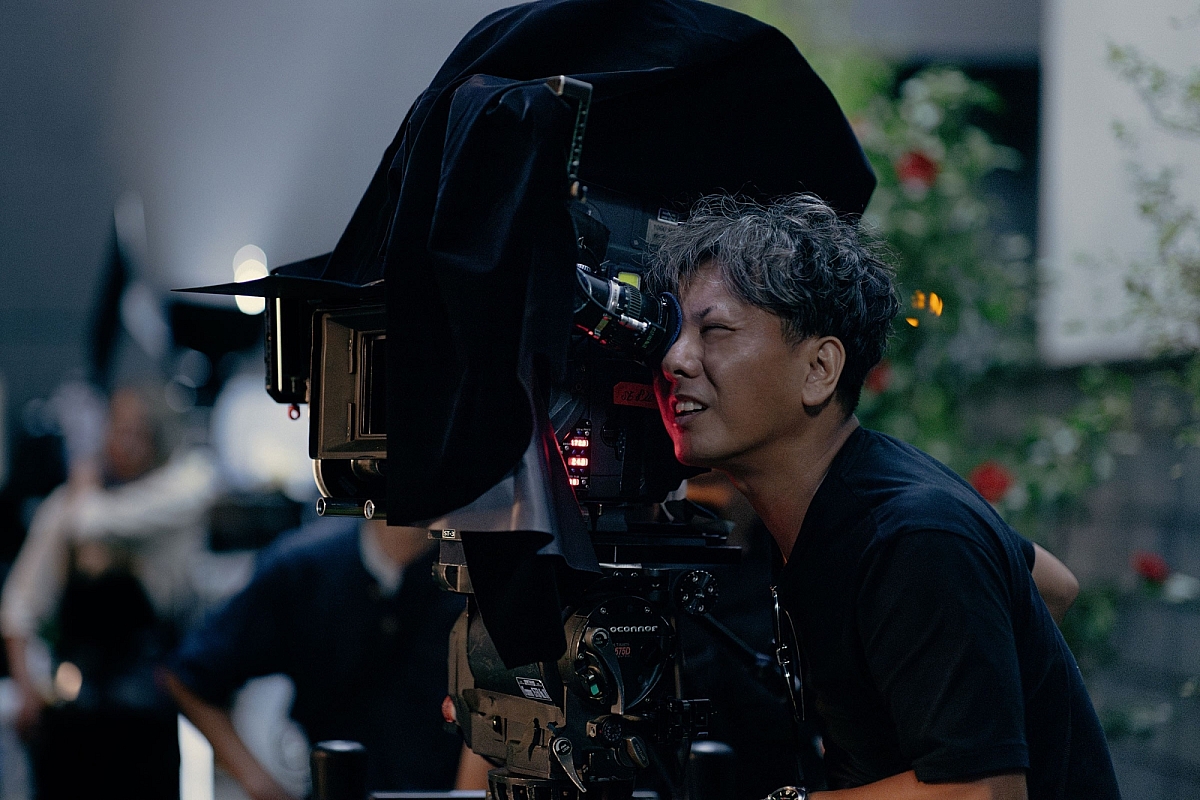
DP Mikiya Takimoto on the set of ASURA. © Netflix, Inc. 2025. All Rights Reserved.
Tell us how you came to start shooting feature films for Mr Kore-eda?
About 30 years ago, I was an assistant to one of Japan’s top advertising photographers, Mr Tamotsu Fujii, who shot a publicity poster for Mr Kore-eda’s film Maboroshi (1995, DP Masao Nakabori). The job was a big deal and, although I was essentially watching from the sidelines, I remember thinking to myself that I had been in the presence of a great director.
A few years later, I shot a photo spread for the style magazine “H”, published by Rockin' On Japan, featuring the main characters from Mr Kore-eda’s third feature film Distance (2001, DP Yutaka Yamazaki), about the members of a cult, which Mr Kore-eda remembers very well.
This led to me working on publicity photographs for his 2009 feature film Air Doll (DP Lee Ping-Bing). It was the first time I had been involved in a feature film as a photographer and, supposing this was a chance I wouldn't get again, I went to the set on days when there wasn't any filming going-on, to see how the DP went about shooting it. He used diagonally-set rails and continuous takes around the characters to create a three-dimensional sense to the picture. I thought, ‘This is how you shoot a film,’ and when I looked back at it recently, the camera work was really well done.
At the time, I didn't have any contact with Mr Kore-eda, except to say ‘hello’ to one another other, but I had a vague idea that I’d like to shoot a feature film at some point in my life.
I then started shooting commercials and that is still my main work. When he was considering the cinematographer for Like Father, Like Son, Mr Kore-eda happened to see a Daiwa House advert I had shot. Normally, I would understand it if a director wanted to try things out on a commercial or a short film first, but he must have been risk-taker as he asked me to shoot that film straight away.
Looking back, I was really nervous at first, as I had never shot a longform narrative with actors properly before. But it worked out well and I went on to shoot Our Little Sister, The Third Murder, followed by Asura, and more recently the short film Last Scene with Mr Kore-eda.

DP MIkiya Takimoto on the set of ASURA.© Netflix, Inc. 2025. All Rights Reserved.
How did you feel when you read the script for Asura?
The three projects I had shot before with Mr Kore-eda were set in the present day, but Asura was a period drama, and I felt that I had to shoot it carefully and properly so as not to tarnish the reputation of the original NHK masterpiece. I also wanted to film a remake that was meaningful, a work that would bring back the times of that era to modern audiences.
My usual work in commercials is done in much shorter spans of time, and I work in a way that requires explosive power. The fact that it was a seven-episode drama was like a sprinter entering a marathon. So, I was more worried about whether I'd be able to keep my energy and concentration up to the end.
In terms of the period, 1979 is the most difficult to shoot on-location as all sorts of things would be noticed in the picture, things like air conditioning units, vending machines and cars, which we had to find ways of hiding or not revealing. If it had been set in an earlier time like the Taisho, Meiji or Edo periods, it would have been much easier.
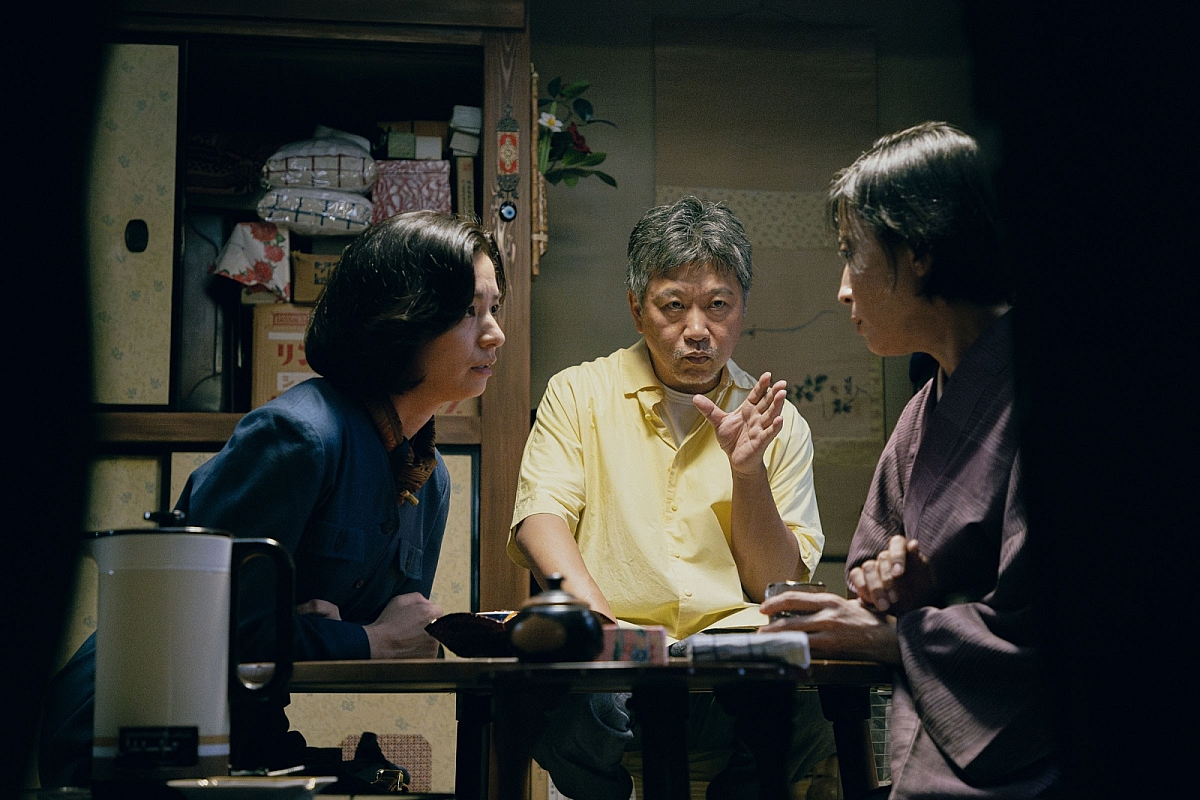
Dir. Kore-eda on the set of ASURA. © Netflix, Inc. 2025. All Rights Reserved.
Did you research the period or study and visual references?
Of course, it was important to read the original book by Kuniko Mukōda, along with some of her other novels. I also found a really interesting book written by Mr. Teruhiko Kuze, who was a close friend of hers, entitled Without Even Touching: 20 Years With Kuniko Mukōda. It all made me feel close to her personality, how she wrote and how she phrased certain lines.
The vintage apartment building where she lived is just around the corner from my office. The Jissen Women's University that she graduated from is also nearby, where there’s a room dedicated to her in which the desks she used during her writings are on-display. Little things like that, and other co-incidences, made me feel a kind awareness about what Kuniko Mukōda was saying and some of that soaked into me.
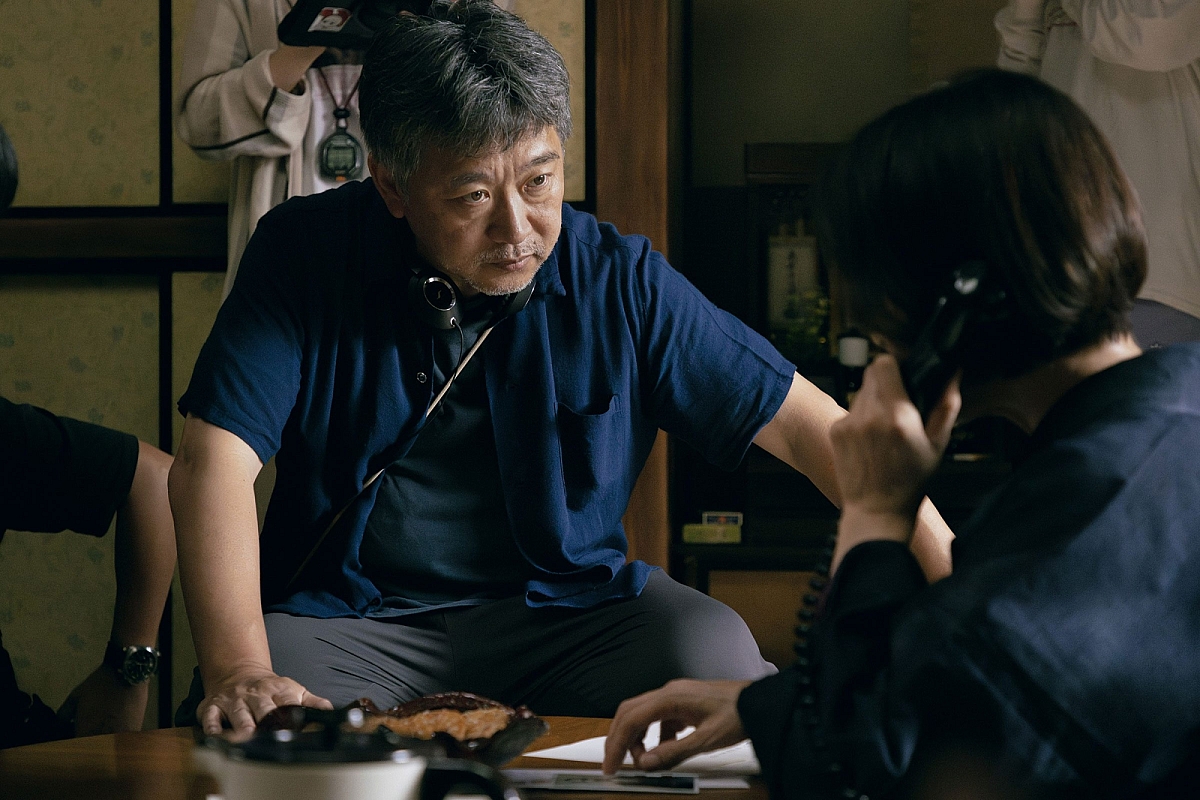
Dir. Kore-eda on the set of ASURA. © Netflix, Inc. 2025. All Rights Reserved.
What kind of discussions did you have with Mr Kore-eda about this production before the shoot?
Mr Kore-eda loves shooting on film, and so do I. But with seven episodes, and quite a few night scenes, I thought it might be best to shoot digitally and then record back to film to achieve the color and texture I wanted.
However, as we continued to hold various meetings and scout for locations, I started to think that originating on film would be better after all. At just about the same time, we got a call about the Kodak Japan and Imagica feature film production support package, and we decided it would be a good option. Mr Kore-eda said he would be happy to shoot Asura on film, and that he would leave it up to me to do as I wished.
Asura delves into the depths of the human heart and the true self that is not often shown on the surface. I thought about shooting digitally for practical, technical and business reasons, but came to feel that there was something strange about that.
I wanted to capture humanity in a way that people could see and feel it, to go inside the actors’ hearts and minds. That’s why I chose to shoot on film.
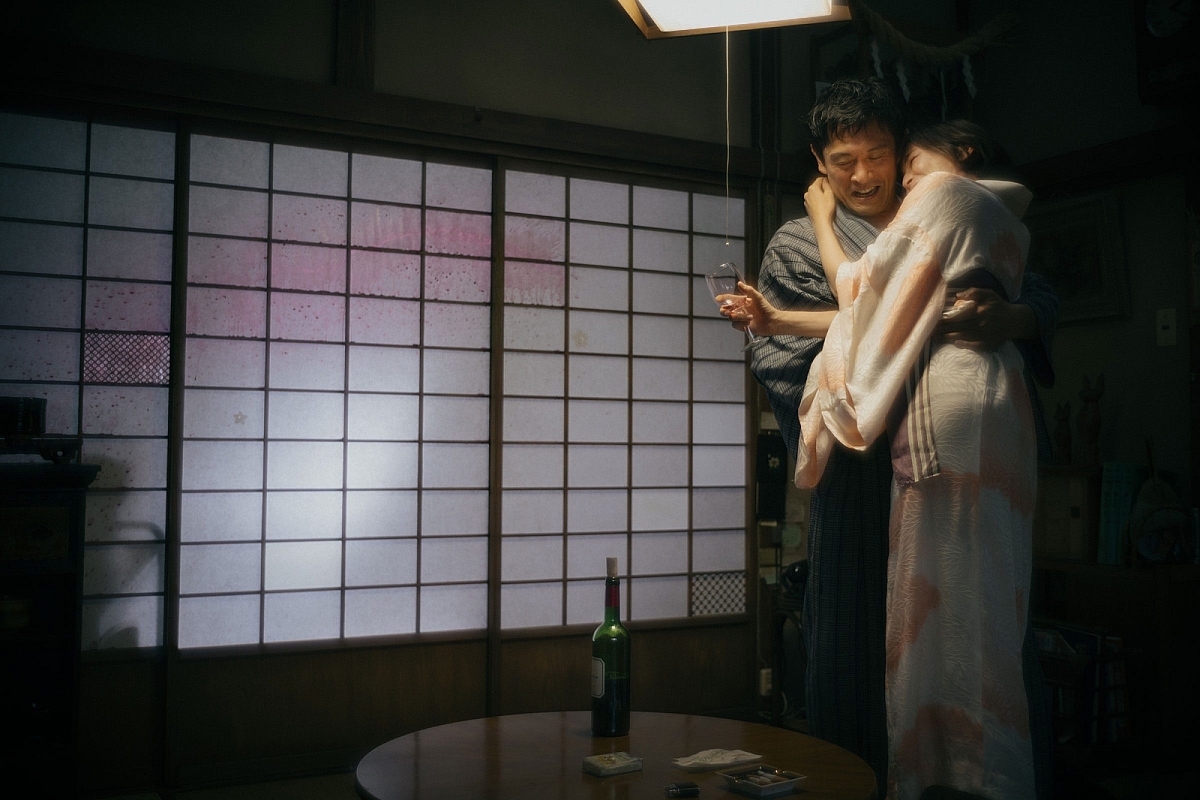
© Netflix, Inc. 2025. All Rights Reserved.
For you, what is the appeal of shooting on film?
Because film involves a chemical process, there are various elements that can't be quantified. While I have an idea in my head about the final tone and finish of the picture before I shoot, there are also quite a few aspects that I'm hoping for that I can't see but can feel.
Things that are invisible to the eye can be captured on film, whether it's a feature film, a drama, or even a photograph. What you see is what your brain understands, but there are also things that you feel with your body or your heart. I think that when you shoot on film, these things are more likely to happen.
For example, it's similar to a vinyl record, where there are wavelengths that you can't hear that are mixed in, and although you can't hear them, they add depth to the sound. In the same way, with film, there is something that you can't see with your eyes, but there is something there that makes you feel good.
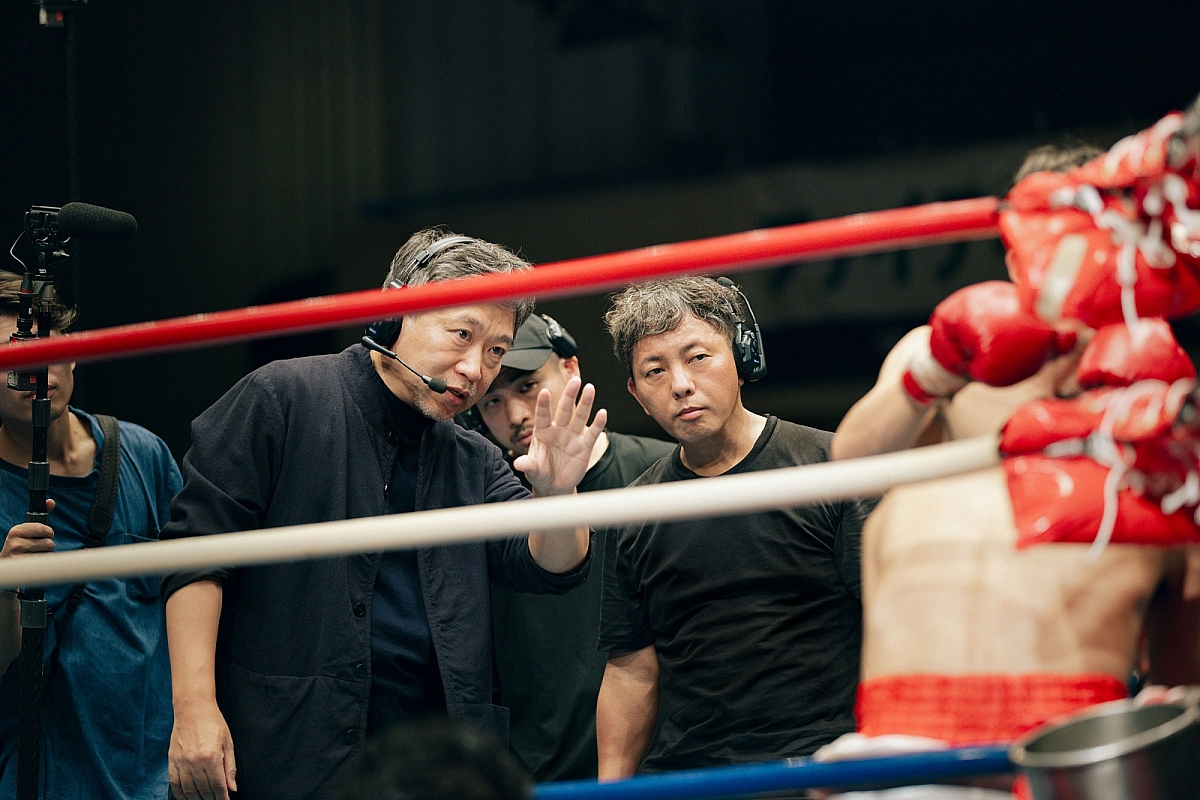
Dir. Kore-eda and DP Mikiya Takimoto. © Netflix, Inc. 2025. All Rights Reserved.
How did you go about achieving the look?
In terms of deciding on the look, I like to create something that's hard to describe or to explain in words, but something that looks good.
We rented a house in Kamakura and shot tests with some of the cast. I had previously published a photo collection that had real character for Our Little Sister on Kodak stills film, using a dark-colored filter in the camera and then correcting and enlarging the image when printing it in my darkroom.
So, I decided to shoot everything with a special color filter to break-up the color balance. However, if I needed light or aperture in a really dark place, I would shoot without the filter, and then recreate the filter effect at L'espace Vision, where the final color grade took place later on.
Basically, I contact-printed the negative to positive film, and returned it to normal using color timing. It's not a digital adjustment, but a chemical one, so the print film comes out with a color balance that is slightly off. This is what gave this production its unique color tone.
If you just follow the manual when making pottery, you can only make ordinary things. It's no fun just using film normally. When lens and camera manufacturers come to do interviews, the conversation inevitably turns to things like resolution, but I'm not interested in that at all. I'm more interested in how to break things down and take them in a different direction.
Tell us about your selection of camera and lenses?
I went with an ARRICAM ST and Zeiss Supreme Primes. I thought it would be better to use sharp lenses, considering that we would finish on print film. If we used lenses with low resolution and a lot of character the image would have become too soft on film. It's all about working backwards from the print film. As it was going to be streamed, I selected 16:9 as the aspect ratio.
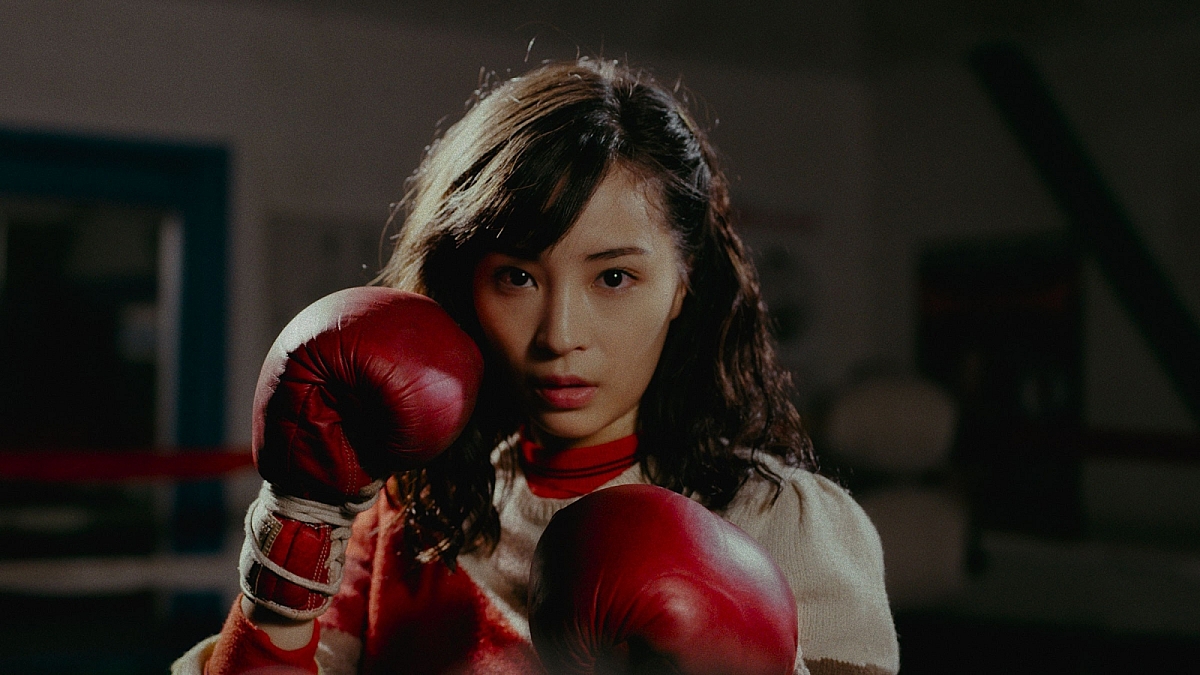
© Netflix, Inc. 2025. All Rights Reserved.
Which filmstocks did you choose for the shoot, and why?
I went with just KODAK VISION 3 500T 5219. As I was using a color filter to break-up the color balance, and also wanted to do one-stop pull-processing of the negative at the lab as well, high sensitivity film was necessary.
I also wanted to avoid having lighting fixtures on the sets as much as possible, and to mainly shoot with the light coming-in from outside though windows. If felt this would give a more realistic quality to the light, but the exposure level would be reduced, so high sensitivity was needed for this too. That’s why I chose 500T.
I always shoot with a wide-open aperture, so when the light level was really low I would typically remove the color filter and use normal processing.
We really were working on the very edge. With an open aperture, it's difficult to get the focus right. I would look through the viewfinder and my assistant would measure with a tape measure, but if I couldn't see the image in the viewfinder, I couldn't check whether the focus was right or not.
So I had the camera's viewfinder blocked-off and a CCD camera put in its place, which was connected to a monitor, and I would operate the camera by watching the monitor. I bought that system from Mr. Miura at Spice.
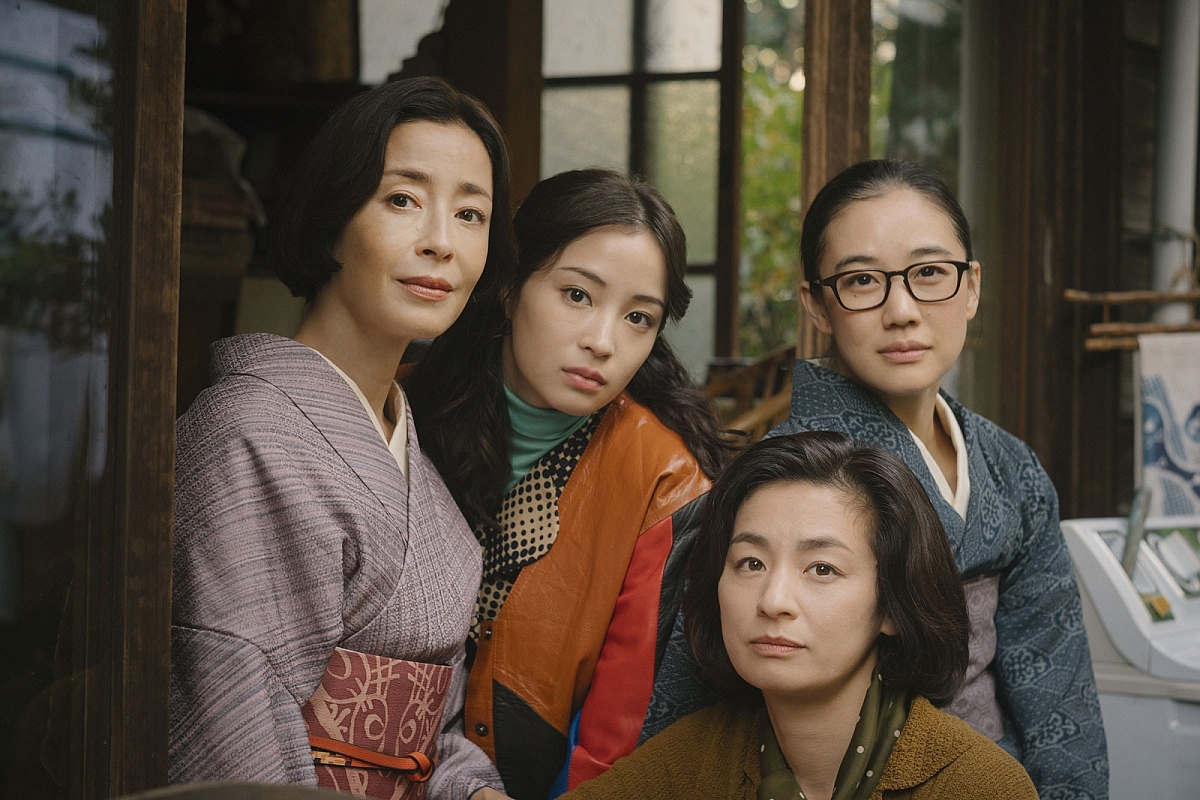
© Netflix, Inc. 2025. All Rights Reserved.
Tell us about your workflow, from negative film development to final grading?
I finished the film up to the positive and then had it scanned to 4K scanned. Sometimes the graininess can be rough and hard to look on the initial negative stage, but the 500T negatives were very clean to begin with, so that was not a problem. Basically, I only used pull-processing and normal processing. I used a digital camera for some ultra-dark scenes, but even then I would shoot with my colored filters and make 35mm film negatives from there before printing the positives.
The low-contrast print film was finished at Imagica Entertainment Media Services in Osaka and then scanned at 4K using a Scanity scanner, before our colorist Mr. Naotaka Takahashi did the final grade at L'espace Vision using Baselight.
The general direction in the final grade was to avoid having any particular color dominate, so the overall color scheme was really subdued and low-key. If too many vivid colors were used, it would have looked more like a recent story, so I aimed for a slightly faded look.
However, we did emphasize red in key scenes to a certain extent, to make the viewer aware of the blood connection between the characters. For example, there’s a scene where we shot inside a washing machine, and we put in a red sock. I also made the obi sash and camellia flowers a little stronger, and the color of the payphone that the husband mistakenly called his wife from was made to look aged red.
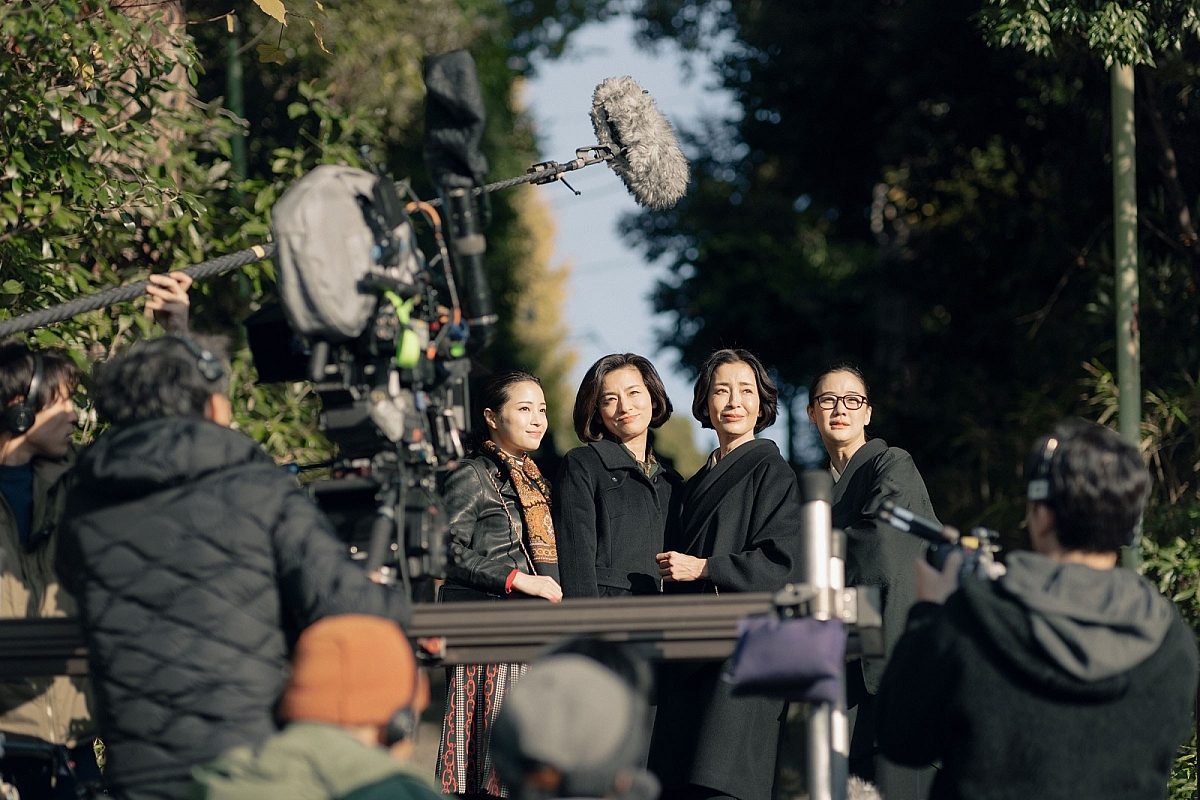
4 sisters and crew on the set of ASURA.© Netflix, Inc. 2025. All Rights Reserved.
What was your philosophy about moving the camera to tell the story?
When trying to convey emotions through camera work, it can be a little too obvious or direct if you zoom-in, pan or tilt-up. Rather than straightforward camera work I used techniques such as reflections in windows or images seen through frosted glass, things that put something between the person and the camera to create a sense of emotional distance.
In this film, the four sisters seem close, but their hearts are a little distant. Even in a married couple, there is a sense of distance between them, as if there is some obstacle between them. Many of these ideas were discovered and came out on the spot as we shot. For example, in the sex scene between Tsunako and her lover Masukawa, the emotional distance between them was obscured by a frosted glass window which also added to the sensuality of the scene.
Tell us your camera and lighting crew?
I operated the camera. Because we were shooting on film, my 1st AC, Keishi Ideguchi, who became a cinematographer last year, was in charge of the exposure meter. We would discuss how much detail we could retain and expose to the film in really dark scenes. My 2nd AC, Yuki Ukibe, who has since become a 1st AC on feature films, was in charge of focus-pulling.
We shared the viewfinder images with everyone. With regular vidicon, the images are totally blurry, and sometimes you can't even make out the expressions, so it's hard to watch, but everyone was saved by Mr Miura’s CCD equipment.
Our 3rd AC, Hiromi Shibuya, was in charge of loading. There aren't that many film shoots these days, so I think that was a good experience. Assistants grow more with film. There’s a completely different sense of tension with film compared to digital, in that with film you have to concentrate on everything.
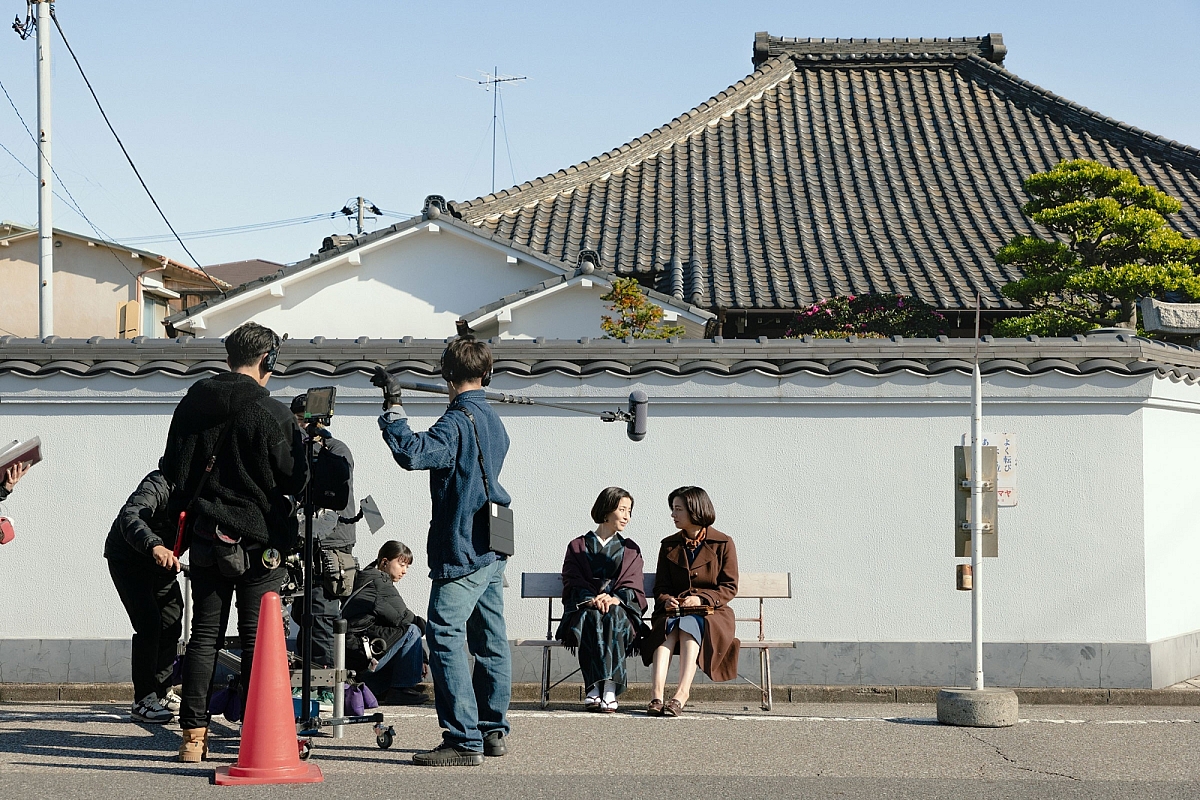
Behind the scenes on the set of ASURA.© Netflix, Inc. 2025. All Rights Reserved.
Please give us some details about the lighting?
You can't see anything unless it's lit, but it's no good if it's obvious to the audience that you're actually illuminating something.
My gaffer was Mr Fujii Norikiyo. I have worked with him since I was in my 20s, and on all the films I have shot. Typically, the rooms in Japanese houses are really dark, so we basically made the lighting on our interior sets as dark as possible.
But, within that we used lighting to express emotions and for dramatic effect. I wanted the lighting to be subtle, high-quality, and to make you think. For example, in the sad scene where Sakiko is crying, we made it look like rain was falling on her face by using artificial lighting.
Is there anything else you would like to comment about shooting of this production?
When you shoot on film, because the monitor doesn't show such a clear image from the HD tap, people tend to focus their attentions much more on the actors and how the camera is set-up for the scene. That creates a sense of unity among the team, especially over a long shooting period, and something special, a good energy, is born, which often leads to things working out well, which they did on this production.
It may sound like a bit like a spiritual theory, but rather than having various people watching the monitor, while eating sweets at a distance, it's much better to have them watching the acting at the other end of the camera while hiding. It makes the atmosphere on-set better, and everyone, especially the actors, were happy to be using film.
A Netflix Series Asura is available on Netflix worldwide.